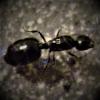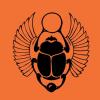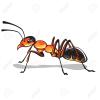Hi, I am Eric, AKA "Water4". (it's my radio call sign at work; it's also ID on my RC float/sea planes) I live and work in the western Maine mountains.
I became interested in studying ants last year after stumbling across a number of ant colonies clearing for ATV trails on my property. Unfortunately I was more interested than prepared, and the one Aphaenogaster fulva colony and half dozen Camponotus queens I found did not survive to hibernation the first year. I studied up over the winter, and am confident to be successful this season.
I am currently keeping:
10) Camponotus noveboracensis in Test Tube setups, collected from mid June to mid July 2017. They all have brood in various stages of development with 3 or 4 having 3-6 new workers.
1) Aphaenogaster fulva colony 800-1000 workers in an Omni Nest Large with lots of egg clusters, and larva everywhere. They were collected in mid June 2017 with only 300-400 workers and brood. They have done very well eating crickets,grass spiders, cellar spiders,mottled grass moth,apple,peach,grape,honey,sugar water,gram cracker,ham,chicken,vanilla wafer,Scrambled egg, and honey nut cheerios.
In late August I collected 3 Aphaenogaster queens and 1 Lasius queen, and now have them in test tubes.
Ant are Awesome. The 5 year old grandson AKA "Flathead" thinks they are awesome too.
I have joined Formiculture.com to share with, and learn from fellow myrmecologists.
Edited by Water4, September 16 2017 - 4:06 AM.




















